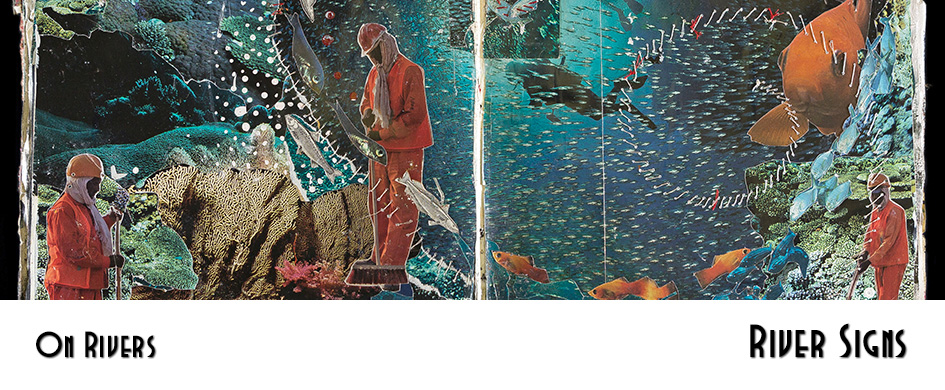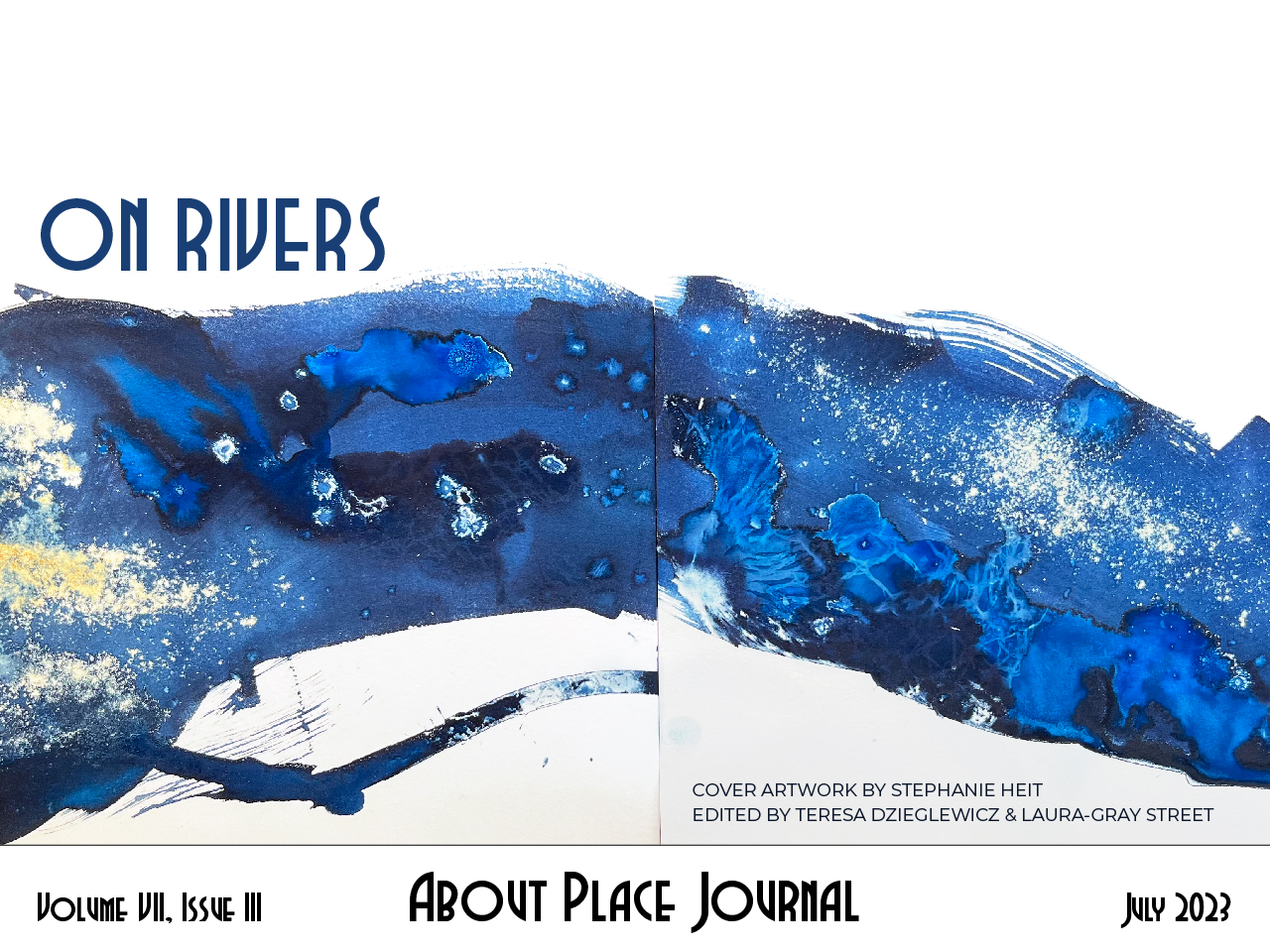through the cemetery and cut a line to the ocean.
Like the Chemung, Tioughnioga, move on along your merry way—so
indifferent to the pillaging upon you. And if that means you must exhume
the remains of a little history here and there, then be that archaeologist!
There are questions ready to be answered. Shells in sandstone eager
for your ear. And will you listen? This is what it feels like to carry on
in the wake of fission—protons of a broken nucleus. H₂O
is just a molecule that we like to write about, lend a memory so that we can
call it metaphorical. It doesn’t know its power. It doesn’t know it’s anything.
Nonetheless, carving landscapes is a labor of love. Bryce. Somoto. Zion.
There’s an essay about the Keyhole, in Utah, where seven people died in a flash
flood that ripped them from their harnesses. May they rest in peace.
It says that in the slots the most dangerous of days will not be overcast.
Erosion happens fastest when the rain is somewhere else. Time compresses.
One afternoon. A decade. It just keeps going faster. Just imagine
the Great Lakes emptying all at once into the Atlantic: how, to hold their contents,
it would require a gorge five times the liquid volume of the Grand Canyon—
far more water than can fit under any bridge. And you might be standing
at the edge, looking in, begging to be swept along, take one look back
just to say it’s easy if you let the current take you, and plunge into the rapids
knowing the only bond that can save you now is elemental. Liquid. Life
and Death. The rocks are eons on a single plane. You
don’t know how to stop—in motion even when you’re still
wondering for what other shore you’re bound and how this path will slice
a little deeper, asking with each gulping breath, Where can you bury water,
knowing the gravedigger, too, must rest?


